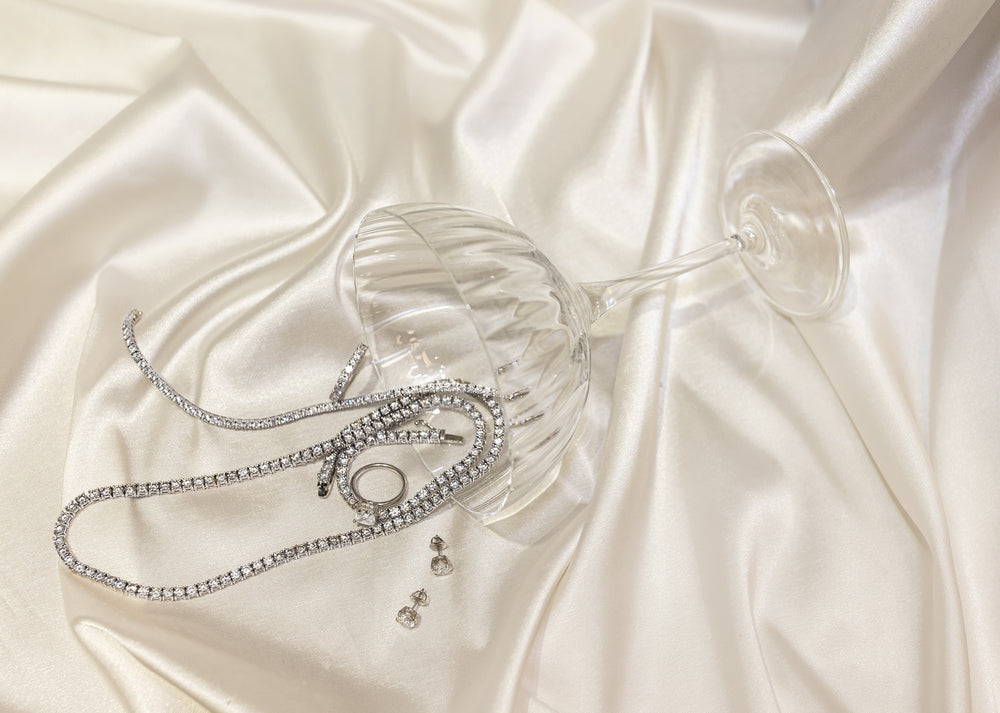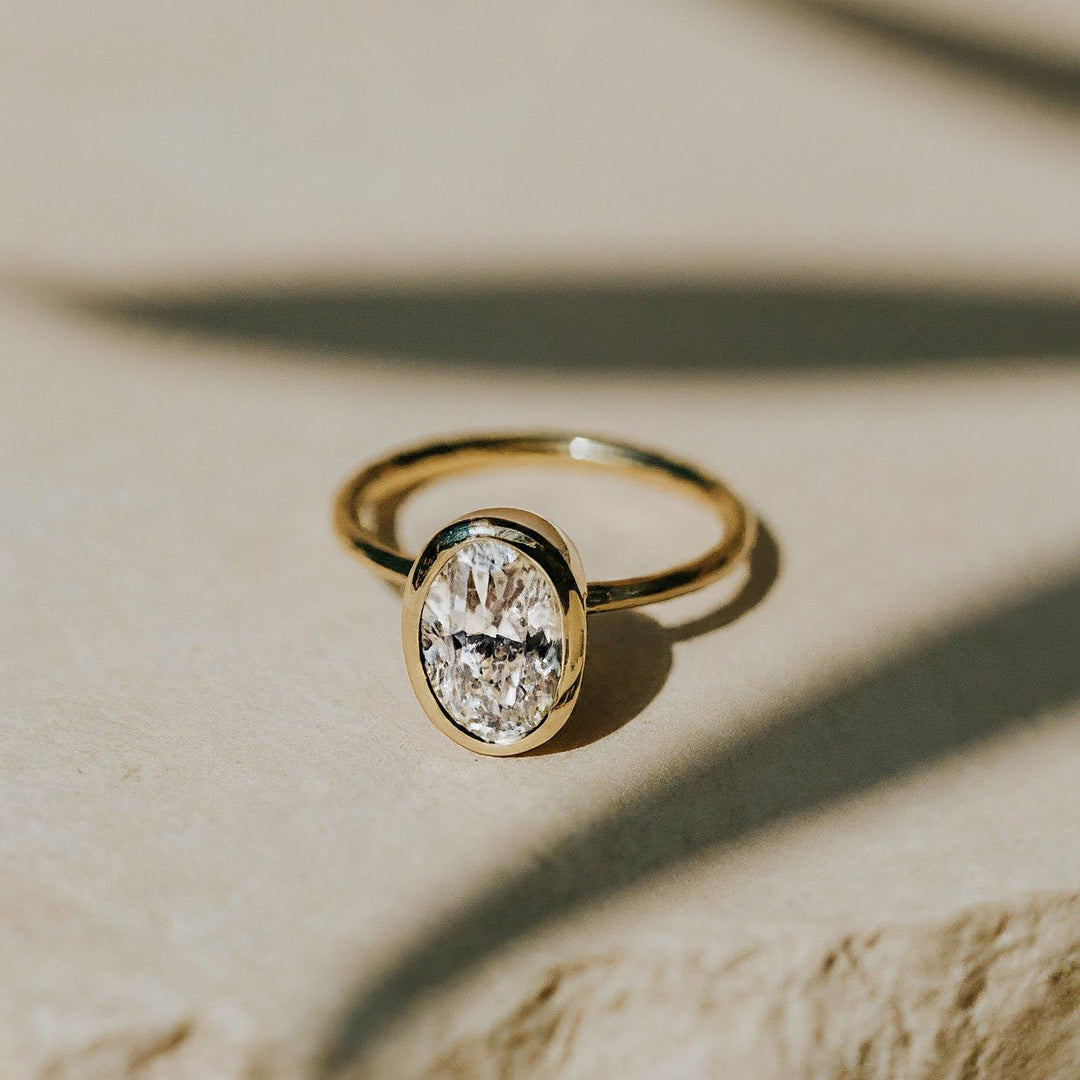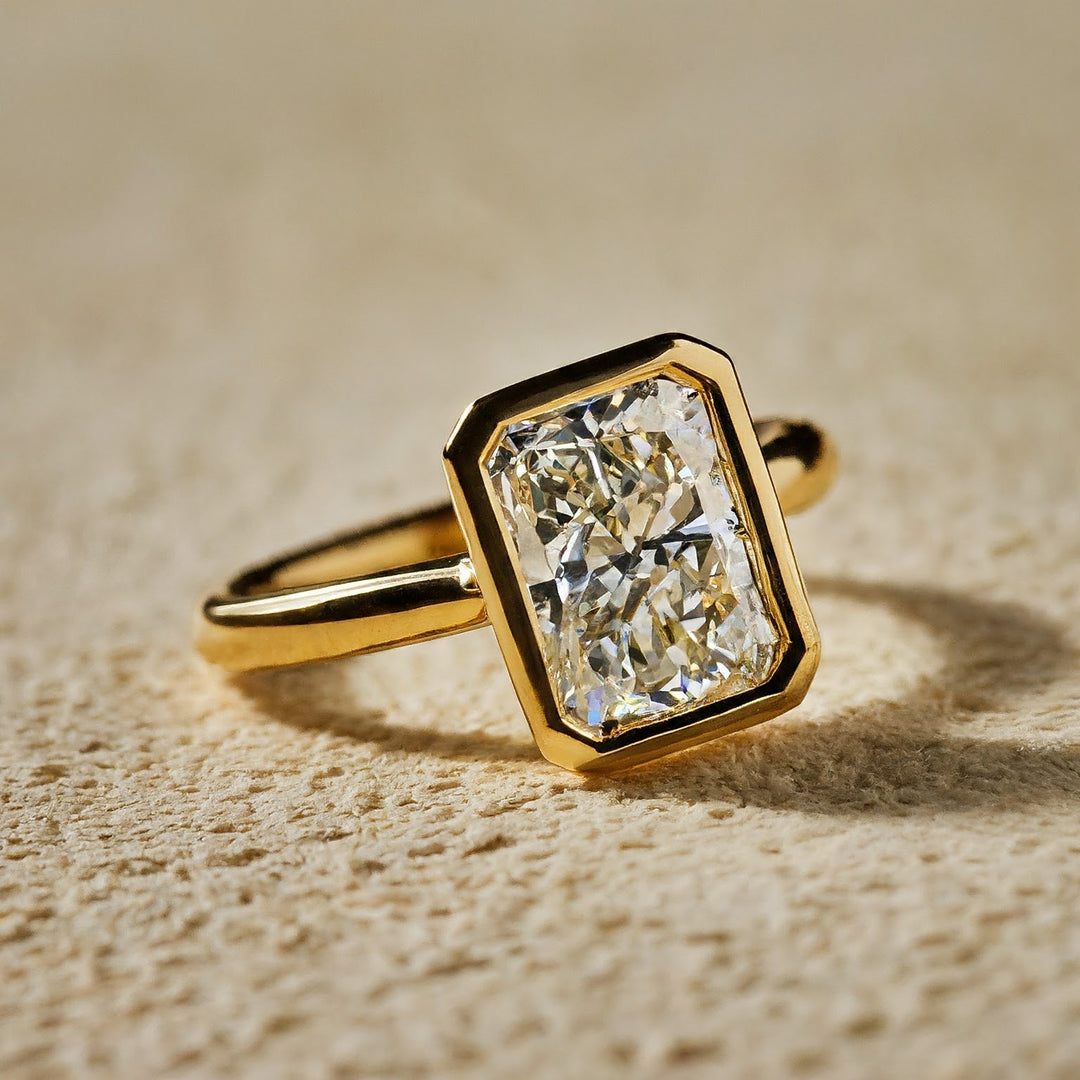A diamond's 4C's are what gives a diamond it's beauty and structure. The 4C's stand for cut, carat weight, color, and clarity. Each of these characteristics is graded on a scale that can be evaluated for quality. Masina Diamonds has been voted one of the best jewelry stores in Atlanta because we educate our clients thoroughly on each of these characteristics. Understanding the 4C's will not only help you better understand how diamonds are priced, but it will also help in making an educated decisions on which combination of these characteristics is right for you.
(Note: Although the 4C's will help you better understand how diamonds are priced, they are not the only factors that go into a diamond's price.)

When is comes to the “4 C’s” cut refers to the proportions of the diamond rather than the shape of the stone itself. How well the diamond sparkles is directly related to how well the diamond was cut. It affects the brilliance (brightness reflected from white light reflection), the fire (dispertion of light into visible colors, like flashes of color) and scintillation (sparkle).
A. If a diamond is an ideal cut the entering light will reflect off the pavilion facets and reflect back out the crown of the diamond. This gives the diamond the fire and liveliness that isn’t seen in lesser cut diamonds.
B. If a diamond is cut too deep entering light will strike the first pavilions facet at a sharp enough angle to make it to the second facet but at a lower angle causing leakage of light from the bottom of the diamond. Deeper cut stones look smaller face up than well cut diamonds of similar carat weight.
C. If a diamond is cut too shallow the entering light will reflect off the pavilion facets and “leak” out the bottom of the diamond. Shallow cut diamonds typically look larger face up compared to well cut diamonds of similar carat weight

Depending on the laboratory where the diamond is graded, round diamond’s cut grades are typically graded either excellent, very good, good, fair or poor. Fancy shape diamonds (anything besides a round diamond) are not given a cut grade by these independent laboratories.
SIDE NOTE: Fancy shapes do not have a cut grade on certificates, but you can get a general idea with the table and depth percentage
Diamonds are weighed in terms of carats shown as “cts.” Notice that carat spelled with a “C” refers to diamond weight, not to be confuse with karat spelled with a “K” which refers to gold purity. An important thing to remember when comparing two diamonds of the same weight is that the price is affected by a combination of all 4 C’s. So two diamonds that are both 1.00 carat can be drastically different in price depending on their color and clarity. If the size of the diamond is an important factor when trying to select the perfect diamond, then you will want to pay attention to carat weight. As diamonds increase in carat weight, their prices increase at an increasing rate. This is because that larger diamonds are more rare. So if a 1.00 carat diamond that cost 6,000, a 2.00 carat diamond of the same quality might be three to four times the price.

Diamonds come in many different colors. Diamonds are graded on an alphabetical scale starting from D (completely colorless) down to Z (yellowish color) . Diamonds on this scale are still considered to be white diamonds; not to be confused with fancy color diamonds, which are graded differently. The diamond color scale is typically grouped between 3 and 4 letters per category; D-F (colorless) G-J (Near Colorless) K-M (Faint Color) N-R (very light color) S-Z (light color). Here at Masina we do not carry diamonds below J color but can have them on hand upon request. Color becomes a little more noticeable as the carat size becomes larger.

Because diamonds are found in nature, they are hardly ever perfect. Their most unique characteristics are their inclusions because it is very unlikely for two diamonds to have the exact same inclusions. There are many different types of inclusions as well such as feathers, crystals, clouds, knots and so on. The lesser the amount of inclusions the clearer the diamond will be, and in turn the more expensive it will be as well. Diamond clarity characteristics are measured on a scale, which is available on diamond certifications. The scale starts at F (flawless), which is extremely rare, and makes its way down to I (included). Don’t stress about trying to find the diamond with no inclusions, because a VVS2 diamond and a VS1 diamond both look the same to the naked eye. Typically, most people stay in the SI1-2 range because they feel that if they can’t see inclusions without a diamond loupe there is no reason in paying a premium for a clearer stone. That way, they have more playing room with the size and color of the diamond, which are actually noticeable to the eye.
NOTE: Two diamonds that are virtually the exact same can vary in prices depending on where the inclusions are in the diamond. A diamond with an inclusion in the center of the table will be less expensive than the same graded diamond with an inclusion on the edge near the girdle.
Polish: refers to the overall smoothness and condition of the diamond’s surface. A well polished diamond can produce crisp reflections and undistorted light transmission while a poorly polished diamond can look dull.
Symmetry: refers to the exactness of shape, and overall outline. A diamond with poor symmetry will have a visible deviation from its shape and reduced brilliance due to misdirected light transmission.
Fluorescence: Fluorescence refers to a diamond's tendency to emit a soft colored glow when subjected to ultraviolet light (such as a "black light"). Roughly 30% of diamonds fluoresce to some degree. Diamonds with fluorescence sell at a discount “perceived as a defect”

The fifth C typically stands for certification. You can think of them almost like the CarFax of your diamond. The diamond certification is a report from an independent laboratory that breaks down the exact details of the diamond from the cut, clarity, carat, and color to the inclusions and where they are on your diamond. There are different labs where diamonds can be graded (GIA, EGLUSA, AGS, IGI). Check out How to Read a Diamond Certificate to better understand how to read the lab report!
(Note: Although the 4C's will help you better understand how diamonds are priced, they are not the only factors that go into a diamond's price.)
Cut

When is comes to the “4 C’s” cut refers to the proportions of the diamond rather than the shape of the stone itself. How well the diamond sparkles is directly related to how well the diamond was cut. It affects the brilliance (brightness reflected from white light reflection), the fire (dispertion of light into visible colors, like flashes of color) and scintillation (sparkle).
A. If a diamond is an ideal cut the entering light will reflect off the pavilion facets and reflect back out the crown of the diamond. This gives the diamond the fire and liveliness that isn’t seen in lesser cut diamonds.
B. If a diamond is cut too deep entering light will strike the first pavilions facet at a sharp enough angle to make it to the second facet but at a lower angle causing leakage of light from the bottom of the diamond. Deeper cut stones look smaller face up than well cut diamonds of similar carat weight.
C. If a diamond is cut too shallow the entering light will reflect off the pavilion facets and “leak” out the bottom of the diamond. Shallow cut diamonds typically look larger face up compared to well cut diamonds of similar carat weight

Depending on the laboratory where the diamond is graded, round diamond’s cut grades are typically graded either excellent, very good, good, fair or poor. Fancy shape diamonds (anything besides a round diamond) are not given a cut grade by these independent laboratories.
SIDE NOTE: Fancy shapes do not have a cut grade on certificates, but you can get a general idea with the table and depth percentage
Carat Weight
Diamonds are weighed in terms of carats shown as “cts.” Notice that carat spelled with a “C” refers to diamond weight, not to be confuse with karat spelled with a “K” which refers to gold purity. An important thing to remember when comparing two diamonds of the same weight is that the price is affected by a combination of all 4 C’s. So two diamonds that are both 1.00 carat can be drastically different in price depending on their color and clarity. If the size of the diamond is an important factor when trying to select the perfect diamond, then you will want to pay attention to carat weight. As diamonds increase in carat weight, their prices increase at an increasing rate. This is because that larger diamonds are more rare. So if a 1.00 carat diamond that cost 6,000, a 2.00 carat diamond of the same quality might be three to four times the price.
Color

Diamonds come in many different colors. Diamonds are graded on an alphabetical scale starting from D (completely colorless) down to Z (yellowish color) . Diamonds on this scale are still considered to be white diamonds; not to be confused with fancy color diamonds, which are graded differently. The diamond color scale is typically grouped between 3 and 4 letters per category; D-F (colorless) G-J (Near Colorless) K-M (Faint Color) N-R (very light color) S-Z (light color). Here at Masina we do not carry diamonds below J color but can have them on hand upon request. Color becomes a little more noticeable as the carat size becomes larger.
Clarity

Because diamonds are found in nature, they are hardly ever perfect. Their most unique characteristics are their inclusions because it is very unlikely for two diamonds to have the exact same inclusions. There are many different types of inclusions as well such as feathers, crystals, clouds, knots and so on. The lesser the amount of inclusions the clearer the diamond will be, and in turn the more expensive it will be as well. Diamond clarity characteristics are measured on a scale, which is available on diamond certifications. The scale starts at F (flawless), which is extremely rare, and makes its way down to I (included). Don’t stress about trying to find the diamond with no inclusions, because a VVS2 diamond and a VS1 diamond both look the same to the naked eye. Typically, most people stay in the SI1-2 range because they feel that if they can’t see inclusions without a diamond loupe there is no reason in paying a premium for a clearer stone. That way, they have more playing room with the size and color of the diamond, which are actually noticeable to the eye.
NOTE: Two diamonds that are virtually the exact same can vary in prices depending on where the inclusions are in the diamond. A diamond with an inclusion in the center of the table will be less expensive than the same graded diamond with an inclusion on the edge near the girdle.
Polish: refers to the overall smoothness and condition of the diamond’s surface. A well polished diamond can produce crisp reflections and undistorted light transmission while a poorly polished diamond can look dull.
Symmetry: refers to the exactness of shape, and overall outline. A diamond with poor symmetry will have a visible deviation from its shape and reduced brilliance due to misdirected light transmission.
Fluorescence: Fluorescence refers to a diamond's tendency to emit a soft colored glow when subjected to ultraviolet light (such as a "black light"). Roughly 30% of diamonds fluoresce to some degree. Diamonds with fluorescence sell at a discount “perceived as a defect”

How are diamonds certified
The fifth C typically stands for certification. You can think of them almost like the CarFax of your diamond. The diamond certification is a report from an independent laboratory that breaks down the exact details of the diamond from the cut, clarity, carat, and color to the inclusions and where they are on your diamond. There are different labs where diamonds can be graded (GIA, EGLUSA, AGS, IGI). Check out How to Read a Diamond Certificate to better understand how to read the lab report!






